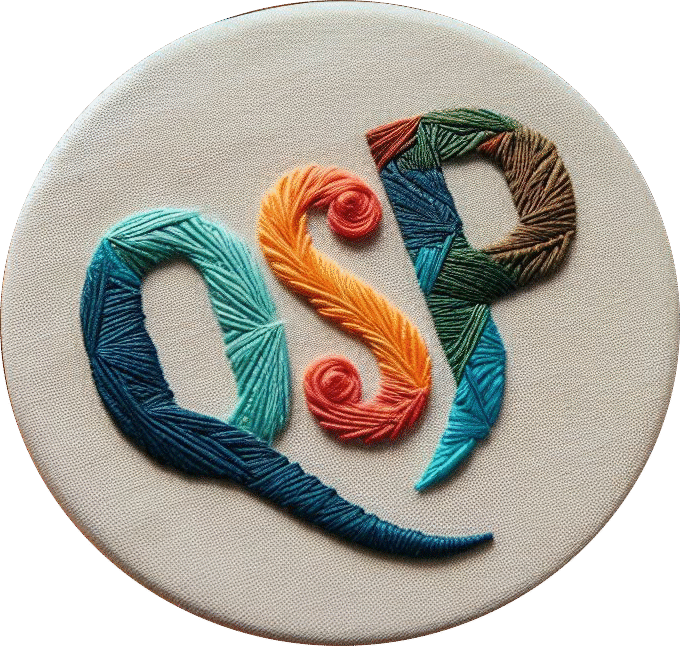🧵 All About Yarn Twist
When we think of yarn, we often imagine a simple, uniform strand. But behind that strand lies a fascinating process that determines its strength, texture, elasticity, and even the type of fabric it can create: yarn twist, or the twisting of yarn. In this article, we will delve into this essential concept of the textile industry and discover what yarn twist is in the textile industry and why it is so relevant.
✅ What is Yarn Twist? | what is yarn twist in the textile industry
Yarn twist refers to the number of turns or twists applied to a group of fibres to transform them into yarn. These twists make the fibres interlock and stay together, giving the yarn strength and cohesion. This twisting of the yarn is key in producing quality fabrics.
Imagine holding several loose strands of wool: if you don’t twist them, they easily fall apart. But if you twist them together, they form a stronger, more compact structure. That is the essence of yarn twisting.
📏 How is Yarn Twist Measured?
👉 Twisting of the yarn is measured in TPI, which stands for Turns Per Inch and tells you how many twists there are in every inch of yarn, and in TPM, which stands for Turns Per Metre and shows how many twists are found in every metre of yarn.
Both measurements help determine how tightly or loosely the fibres are twisted together.
To measure it, a device called a twist tester is used. This tool holds the yarn at one end while unwinding the other end until the yarn becomes completely straight (without twist). The number of turns undone corresponds to the original twist.
This measurement is crucial because more twisting of the yarn does not always mean better quality; it depends on the intended use of the yarn.
🔄 Types of Yarn Twist: S and Z
The direction of the twist also matters:
- S-twist: fibres twist in the direction of the angle of the letter “S”.
- Z-twist: fibres twist in the direction of the angle of the letter “Z”.
This is not just an aesthetic detail: combining yarns with different twist directions in the same fabric can lead to unwanted twisting or distortion.
For example, most commercial sewing threads are Z-twist, while some knitting yarns are S-twist. Using both in the same garment can affect the drape and shape of the fabric.
💡 Why is Yarn Twist Important? | yarn twist importance
Yarn twist in the textile industry is crucial because it directly affects the properties of the yarn and the final fabric. A low twist produces softer, fluffier, and bulkier yarns, ideal for comfortable and soft garments. In contrast, a high twist creates stronger, more compact yarns, less prone to pilling, ideal for finer and more durable fabrics. The choice of twist level depends on the balance sought between softness, strength, bulk, and durability in the final product.
🏭 Applications of Yarn Twist in the Textile Industry | applications of yarn twist in fabrics
Twist not only affects appearance and texture but also the durability, comfort, and performance of the finished fabric. Some applications of yarn twist in fabrics include:
✅ Light and soft fabrics → low twist (summer clothing, scarves). ✅ Strong and dense fabrics → high twist (denim, sewing threads, upholstery). ✅ Knitted fabrics → requires adjusted twist to avoid distortion.
Moreover, yarn twisting in the textile industry affects how easily fabrics take up colour, how well they resist forming little fabric balls (pilling), and how good they are at keeping warmth in.
This is why yarn specifications always include the number of twists and the direction. Understanding applications of yarn twist in fabrics is essential to achieve high-quality, durable products.
🔍 A Brief History: Twist in Ancient Cultures
Interestingly, the concept of twist is not new. Ancient civilisations already used twisting of yarn when hand-spinning fibres such as cotton, wool, and linen. Spinning wheels were key tools for manually controlling twist.
With the Industrial Revolution, spinning machines perfected this process, enabling standardisation of twist levels and improving yarn quality.
Today, technology has advanced, but the principle remains the same: twist is what transforms loose fibres into a strong, functional yarn.
- 📚 Practical Tips for Professionals and Hobbyists
If you work in the textile industry or are passionate about textiles, here are some recommendations: read the specifications of the yarns you buy, as knowing the yarn twist will help you choose the right one for your project; avoid mixing twist directions randomly because this can cause twisted or unstable fabrics; experiment with different levels of twisting of the yarn if you are developing new products or seeking unique effects; and remember there is no “best twist” universally since it all depends on the fabric’s end use — do you need softness, strength or elasticity?
Yarn twist in the textile industry is a small yet fundamental detail. Although invisible to many consumers, it is one of the factors that most influences the quality, durability, and aesthetics of a fabric.
In modern textile production, understanding and controlling yarn twist is key to innovating, optimising processes, and delivering high-quality products.
So next time you hold a garment, think of the thousands of micro-twists that made that fabric possible… and appreciate the craft behind every yarn!
Would you like us to explore other technical textile concepts in future posts? Leave a comment or write to me directly. 🧵✨


Deja una respuesta